"The chords don’t sound clean..."
"I can't change chords smoothly..."
"My solo ukulele playing feels clumsy..."
Anyone who plays the ukulele has probably experienced these problems at some point.
The cause can vary, whether it's how you hold the instrument, your right hand, or your left hand.
However, based on my experience teaching students, in most cases the issue lies with the left hand.
So in this article, I will introduce exercises to you to help make your left hand more agile. If you’ve been struggling with playing smoothly, give these a try!
① Place your first and third fingers on the 4th string, and your second and pinky fingers on the 3rd string.
(Note: Normally on the ukulele, you don’t place multiple fingers on the same string. This is a special fingering used only for this exercise.)
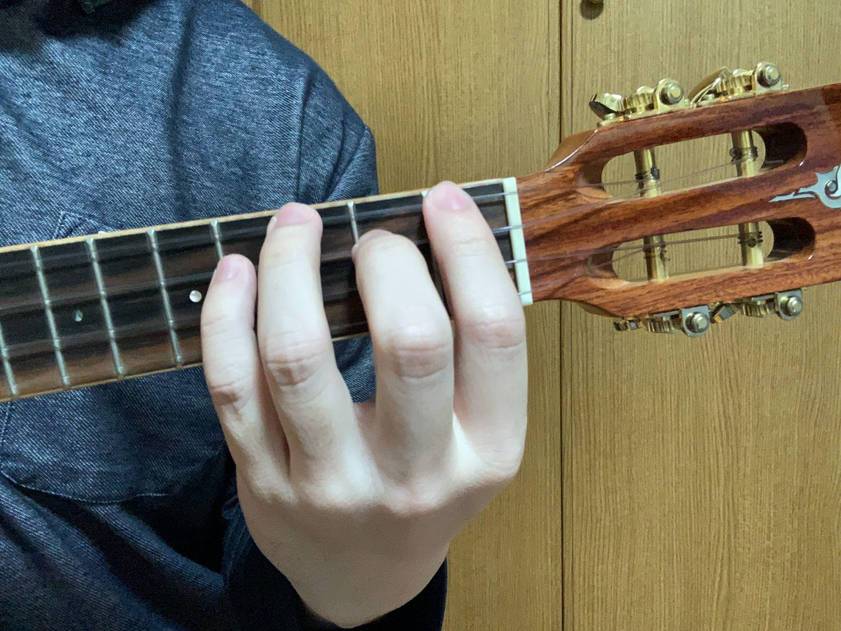
Make sure your fingers are pressing the strings in a zigzag pattern.
At this point, you don’t need to strum with your right hand.
② While keeping your middle and pinky fingers in place, move your index and ring fingers across the 3rd string and press down on the 2nd string.

Try to move both fingers at the same time if you can.
If that’s too difficult, it’s okay to move them one at a time.
③ While keeping your index and ring fingers in place, move your middle and pinky fingers across the 2nd string and press down on the 1st string.
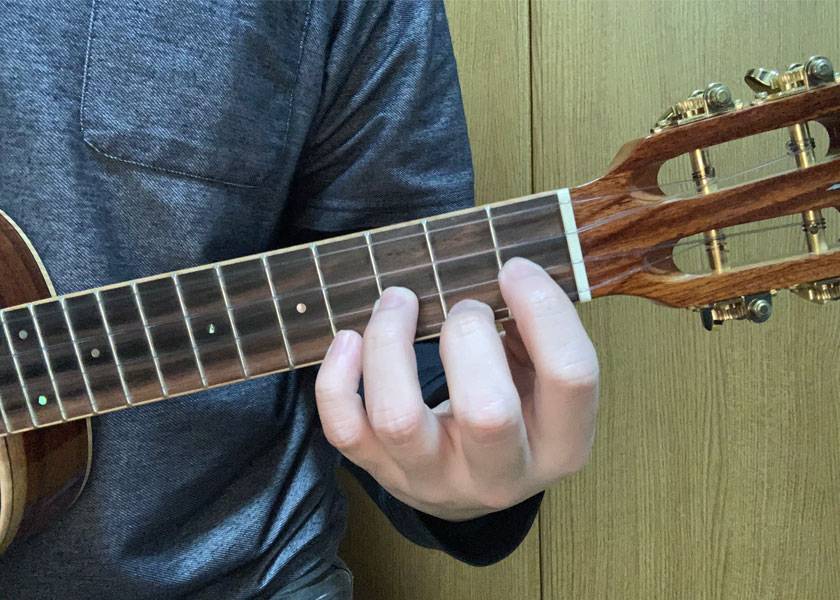
At this point, check the positioning of your fingers.
If done correctly, your index and ring fingers should be pressing the 2nd string, and your middle and pinky fingers should be pressing the 1st string.
If your hand shape has collapsed or the fingers are out of position, start over from the beginning.
There’s no need to rush.
Focus carefully on the movement of each finger and stay mindful of which one you're trying to move.
④ While keeping your index and ring fingers in place, move your middle and pinky fingers back across the 2nd string and press down on the 3rd string.

Now move those two fingers up to the next string.
It may be more difficult to move back up than it was to go down, but you’re almost there—keep going!
⑤ While keeping your middle and pinky fingers in place, move your index and ring fingers across the 3rd string and press down on the 4th string.

This is the final move.
If your fingers are now in the same position as when you started, you’ve returned to the correct shape.
How was it?
I think that this exercise is quite difficult for beginners.
If you’re intermediate or advanced and still can’t do it, start practicing finger independence right away.
If you can’t do this exercise at all, it’s likely your fingers are making unnecessary movements when playing chords or single-note melodies.
Ideally, you should try to practice finger independence every day, but don’t overdo it.
If you feel any pain in your wrist or fingers, stop immediately.
At first, it’s okay to only do the downward movements (steps ① to ③).
Once you get used to it, try the upward movements (steps ④ and ⑤) as well.
If you want to take this practice further, try it in other positions on the fretboard too.
⑥ Position starting with the index finger on the 5th fret.
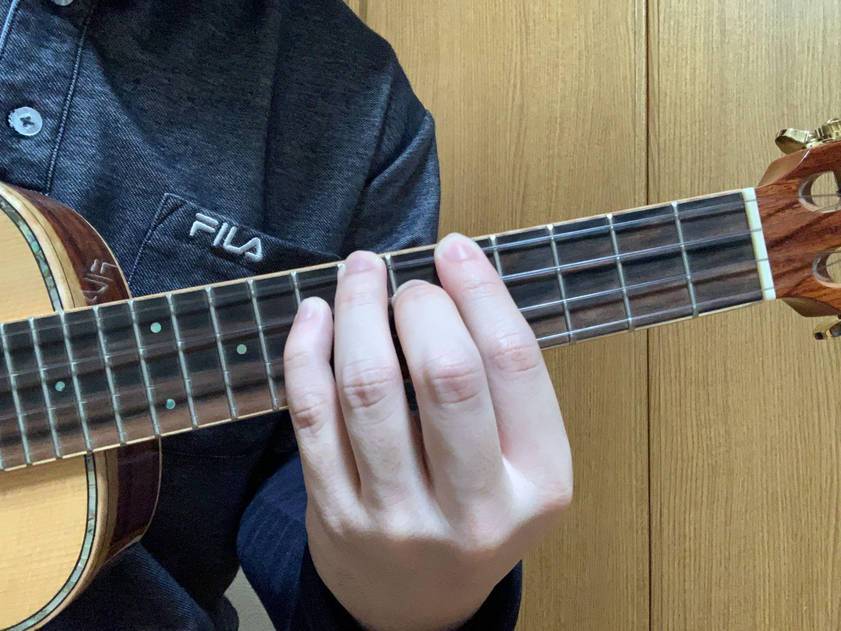
⑦ Position starting with the index finger on the 9th fret.
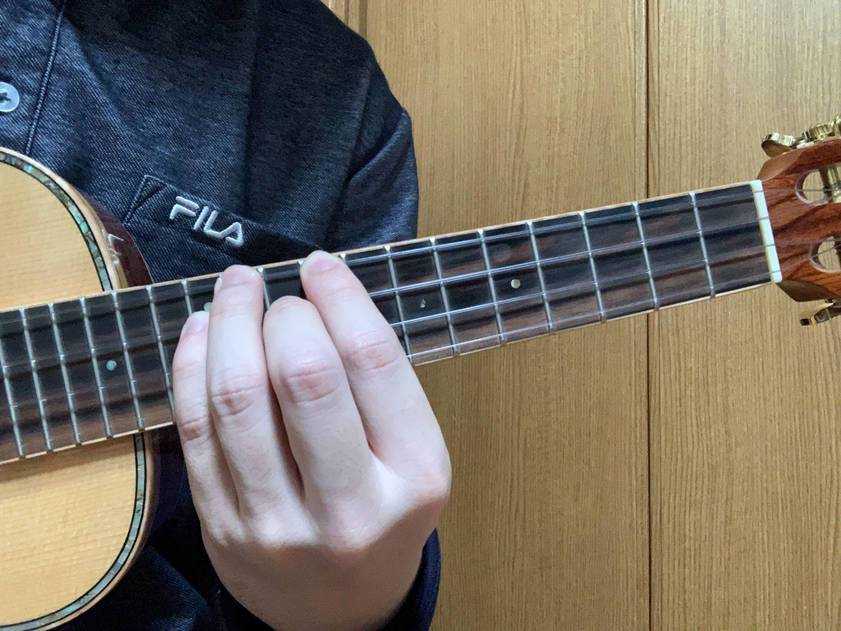
When you change positions, the fret spacing changes, and the angles of your wrist and fingers also change.
This applies not only to this exercise but to all practice; developing and expanding your practice is very important.
Once you can do it while moving positions, try reversing the initial finger shape.
⑧ Place your index and ring fingers on the 3rd string, and your middle and pinky fingers on the 4th string.

It may feel very similar to the original shape, but when you try it, you’ll find it surprisingly difficult.
Start with this shape and, once comfortable, try moving positions again.
To summarize
The ukulele can play both chords and the melody, and you can even play both at the same time (this is called solo ukulele).
It’s smaller and lighter than a guitar, and pressing the strings is easier.
However, while it may seem simple, playing cleanly is actually quite challenging.
Most of the time, the issue lies with the left hand.
Key points for the left hand:
- Press the strings with your fingertips
- Press your fingers close to the fret
- Avoid letting the fleshy part of your finger touch adjacent strings
These key points are definitely important.
Following these three often helps improve your playing.
However, I believe that even more important than that is being able to move your fingers with flexibility.
If you can’t do that, every time you encounter a new chord or finger pattern, you’ll get stuck and waste time.
Isn’t it more fun to challenge yourself with various songs once you start playing the ukulele?
The practice exercises in this article are designed to help you gain independence and control over your fingers.
But, don’t expect to instantly be able to play any chord or phrase effortlessly after just a few attempts.
If you practice steadily every day, there will come a moment when you can smoothly play things that used to be difficult for you.
That’s proof your skill has significantly improved.
I recommend this practice exercise for everyone, from beginners to advanced players.
Thank you for reading until the end.
Next time, I’ll introduce more exercises to improve your left-hand dexterity, so stay tuned!
The “sound & person” column is made up of contributions from you.
For details about contributing, click here.









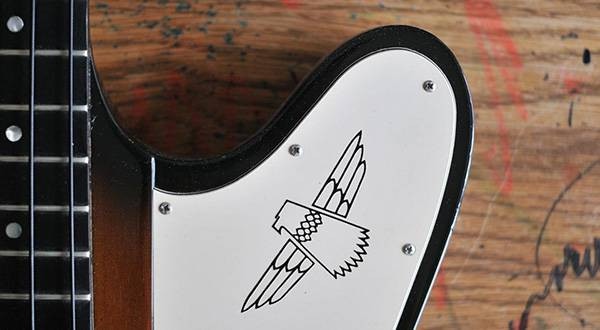



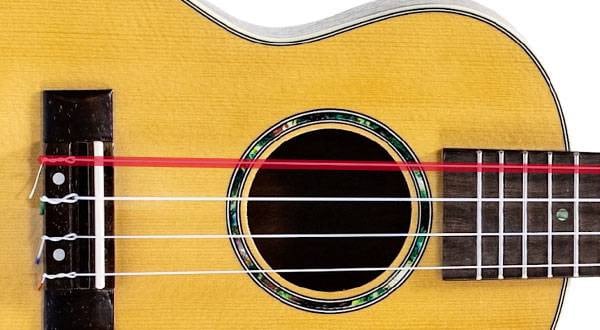
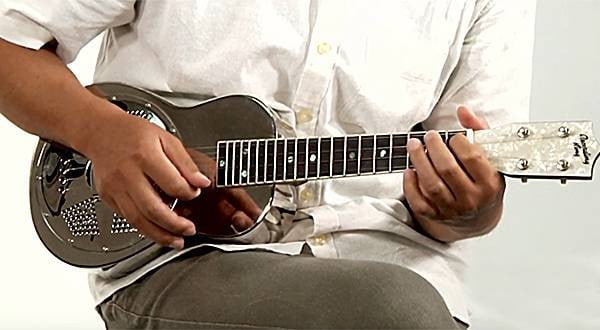
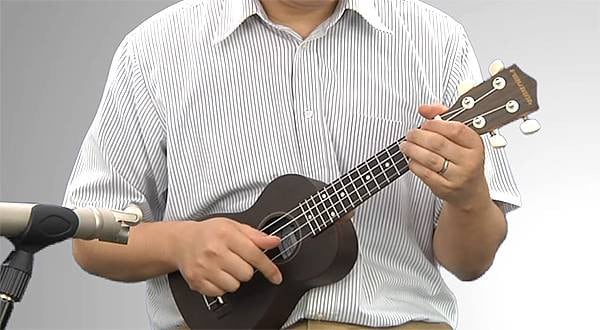
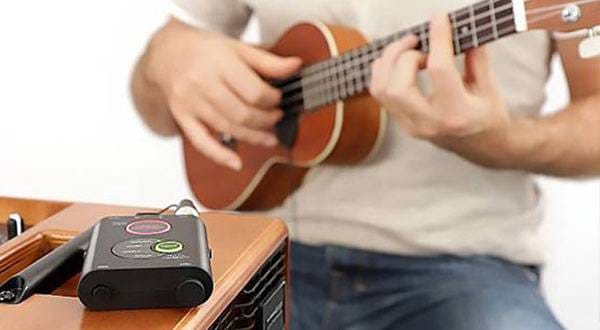

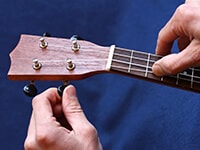 ウクレレのチューニング方法
ウクレレのチューニング方法
 ウクレレの各部名称
ウクレレの各部名称
 ウクレレの種類
ウクレレの種類
 ウクレレスタートガイド
ウクレレスタートガイド
 めちゃラク!ギター講座
めちゃラク!ギター講座
 ウクレレ初心者講座
ウクレレ初心者講座















